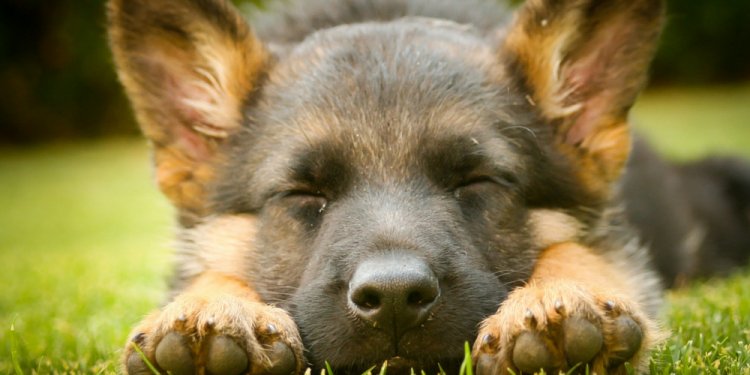
History of the German Shepherd
 This brief history is not intended to be all inclusive. It is an outline of breed history from a North American perspective.
This brief history is not intended to be all inclusive. It is an outline of breed history from a North American perspective.
The German Shepherd Dog is respected and admired throughout the world for its versatility, intelligence, and loyalty. It has existed as a recognized breed for a relatively brief period of time compared to other dog breeds. The early shepherd dogs of Germany were of several types suited to their environments. Coat length and texture, color, and build all varied but these types all possessed ruggedness, intelligence, soundness, and the ability to do specialized work.
With advances in transportation and communication came the forming of societies of herders and the first trends toward selective breeding of herding dogs, record keeping, and a gradual trend toward one type of dog which could work equally well under all conditions. In 1881, the first formal club, the "Phylax" society was formed but lasted only about three years.
In 1889 Captain Max von Stephanitz began the standardization of the breed. It all started at a dog show in Karlsruhe in western Germany. A medium-sized yellow-and-gray wolflike dog caught his attention. The dog was of the primal canine type, supple and powerful, and possessed endurance, steadiness, and intelligence. He was a working sheepherder, born with this ability, requiring no training other than direction and finish to become proficient at the task. This dog, Hektor Linksrhein, was purchased by von Stephanitz, renamed Horand von Grafrath, and became the first registered German Shepherd Dog.
Von Stephanitz founded the Verein für Deutsche Sch·ferhunde, SV (German Shepherd Dog Club), becoming the first president, and in a short period of time achieved the standardization of form and type in the breed. A standard was developed based on mental stability and utility. The captain's motto was "Utility and intelligence". To him beauty was secondary, and a dog was worthless if it lacked the intelligence, temperament, and structural efficiency that would make it a good servant of man. A breed standard was developed as a blueprint dictating the exact function and relationship of every aspect of structure, gait, and inherent attitude.
Von Stephanitz inbred heavily on Horand and also Luchs, his brother, to consolidate the bloodline. Horand's best son, Hektor von Schwaben, the second German Sieger, was mated with his half-sister as well as through daughters of his own sons, Beowulf, Heinz von Starkenberg, and Pilot III.
Intense inbreeding also concentrated undesirable recessive originating from the mixing of the original strains. Von Stephanitz then inserted unrelated blood of herding origin through Audifax von Grafrath and Adalo von Grafrath.
As Germany became increasingly industrialized and the pastoral era declined, von Stephanitz realized the breed might also decline. With the co-operation of police and working dog clubs a set of specific tests was developed in tracking, formal obedience, and protection work. This was the prototype of the present Schutzhund trials. He persuaded the authorities to utilize the German shepherd dog in various branches of government service. The dog served during the war as Red Cross dogs, messenger dogs, supply carriers, sentinel, tracking and guard dogs.
 The first German Shepherd Dog exhibited in America was in 1907. Mira von Offingen, imported by Otto Gross, was shown by H. Dalrymple, of Port Allegheny, Pennsylvania in the open class at Newcastle and Philadelphia. The first championships awarded German Shepherd Dogs was in 1913. In 1913 the German Shepherd Dog Club of America was formed by Benjamin Throop and Anne Tracy, with 26 charter members.
The first German Shepherd Dog exhibited in America was in 1907. Mira von Offingen, imported by Otto Gross, was shown by H. Dalrymple, of Port Allegheny, Pennsylvania in the open class at Newcastle and Philadelphia. The first championships awarded German Shepherd Dogs was in 1913. In 1913 the German Shepherd Dog Club of America was formed by Benjamin Throop and Anne Tracy, with 26 charter members.
The German Shepherd Dog Club of America's first specialty show was at Greenwich, Connecticut in 1915. In 1917, when America entered World War I, all things German became tabu. The American Kennel Club changed the name of the breed to the Shepherd Dog and the German Shepherd Dog Club of America became the Shepherd Dog Club of America. In England, the name of the breed was changed to the Alsatian.
With the end of World War I came a new appreciation for the breed. The German Army had made good use of the breed as a war dog. Tales told by returning U.S. fighting men, some bringing shepherds with them, and the intelligence and striking appearance of the dogs caught the attention of the general public. Rin-Tin-Tin and Strongheart, whose movies played on variations of the "boy and his dog" theme, shot the popularity of the breed sky-high. Puppy factories flourished to meet the demand, gutting the American market with poor quality "German police dogs", resulting in a down-turn in popularity of the breed.
Serious breeding did continue such as by Mrs. Harrison Eustis, of Fortunate Fields Kennels, in Switzerland. Her approach was completely scientific with exhaustive research of breedings undertaken. The most widely known usefulness to which her dogs were put was as guide dogs for the blind at the famous Seeing Eye in Morristown, New Jersey.









